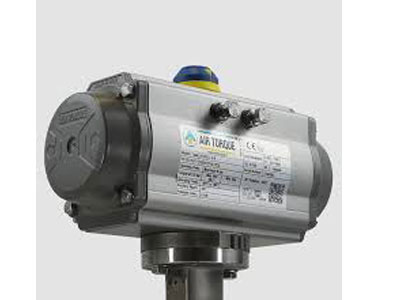What Are The Methods Used To Control Actuators?
Key Takeaway
Actuators are controlled through a control signal and an energy source. The control signal can be manual, automatic, or robotic, while the energy source could be electrical, compressed air, or hydraulic pressure.
Common methods to control actuators include PID controllers, which are often used for control valves. Force control, either open-loop or closed-loop, is used to manage the force applied by linear actuators. Additionally, power converters transform energy from the actuator’s source into a usable form. When selecting a control system, factors like accuracy, response time, and cost are considered. There are different types of actuators, such as hydraulic, pneumatic, mechanical, electric, magnetic, and thermal actuators, each suitable for various applications based on their unique properties.
Manual Control of Actuators
Manual control is the most basic and straightforward method for operating actuators. It involves direct human intervention, typically through levers, knobs, or pushbuttons, to control the movement or function of the actuator.
How It Works:
Operators physically adjust the actuator’s position or operation.
Movement is guided based on visual inspection or system requirements.
Applications:
Manual control is often used in systems where precision is not critical, or automation is unnecessary. Examples include:
Opening and closing valves in low-tech systems.
Adjusting mechanical components in maintenance tasks.
Advantages:
Simplicity and low cost.
Requires no external power source.
Limitations:
Prone to human error.
Unsuitable for high-speed or repetitive tasks.
While manual control has its limitations, it remains relevant in many low-tech applications where simplicity and cost-efficiency are priorities.

Pneumatic Control Systems for Actuators
Pneumatic control is one of the most popular methods for managing actuators in industrial settings. It utilizes compressed air to control the actuator’s motion, offering a reliable and clean solution.
How It Works:
Compressed air is directed through valves to actuators.
Pressure variations control the actuator’s movement, either linear or rotary.
Applications:
Conveyor systems in manufacturing.
Valve automation in fluid control industries.
Advantages:
Simple and cost-effective.
Operates in harsh environments where electrical systems may fail.
Limitations:
Requires a steady supply of compressed air.
Limited force and speed compared to hydraulic systems.
Pneumatic control remains a preferred method for applications requiring fast response and reliability, particularly in clean environments like food processing or pharmaceuticals.
Hydraulic Control Techniques
Hydraulic control systems are known for their ability to deliver high force and precise movement, making them ideal for heavy-duty applications. These systems use pressurized hydraulic fluid to control actuators.
How It Works:
Hydraulic pumps generate fluid pressure.
Valves direct this fluid to the actuator, controlling its movement.
Applications:
Heavy machinery such as excavators and cranes.
Precision tools in metalworking industries.
Advantages:
High power-to-weight ratio.
Smooth and precise control.
Limitations:
Requires regular maintenance to prevent leaks.
More complex and costly compared to pneumatic systems.
Hydraulic control systems excel in applications demanding high force and durability, such as lifting heavy loads or operating large industrial presses.
Electrical and Electronic Control Methods
Electrical and electronic controls offer the highest precision and flexibility, making them the go-to choice for advanced and automated systems. These methods use electric motors or solenoids to operate actuators.
How It Works:
Electric signals control the actuator’s movement.
Integration with microcontrollers enables real-time adjustments.
Applications:
Robotics and automation systems.
Medical devices requiring precise motion.
Advantages:
High precision and speed.
Easy integration with sensors and feedback systems.
Limitations:
Sensitive to electrical disturbances.
Higher initial cost compared to manual or pneumatic systems.
Electrical control systems are ideal for applications requiring intricate motion control, such as robotic arms or CNC machines.
Advanced Feedback Systems for Precision Control
Advanced feedback systems enhance the functionality of actuators by providing real-time data to control systems. These methods use sensors to monitor parameters like position, speed, and force.
How It Works:
Sensors collect data on actuator performance.
Control systems adjust inputs based on feedback, ensuring precise operation.
Applications:
Aerospace systems for flight control.
Smart manufacturing with adaptive automation.
Advantages:
High precision and adaptability.
Reduces errors and improves efficiency.
Limitations:
Requires complex system integration.
Higher cost and maintenance requirements.
Feedback systems are essential for modern industries focusing on precision, such as aerospace and semiconductor manufacturing.
Conclusion
Actuators are controlled through various methods, including manual, pneumatic, hydraulic, electrical, and advanced feedback systems. Each method offers unique benefits tailored to specific applications, from the simplicity of manual controls to the precision of advanced feedback mechanisms.
For engineers, understanding these control methods is crucial for selecting the right solution for their application. As industries continue to embrace automation, actuator control systems remain at the forefront of enabling precision, efficiency, and innovation across diverse sectors.

